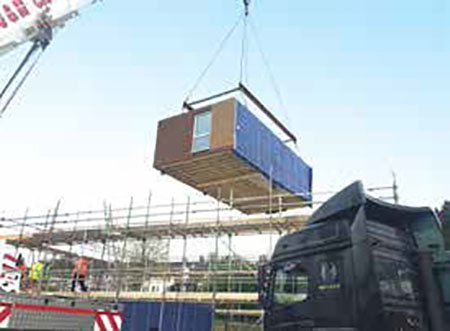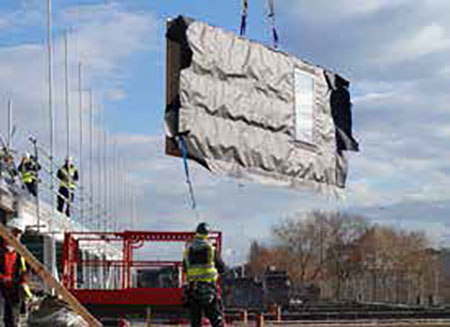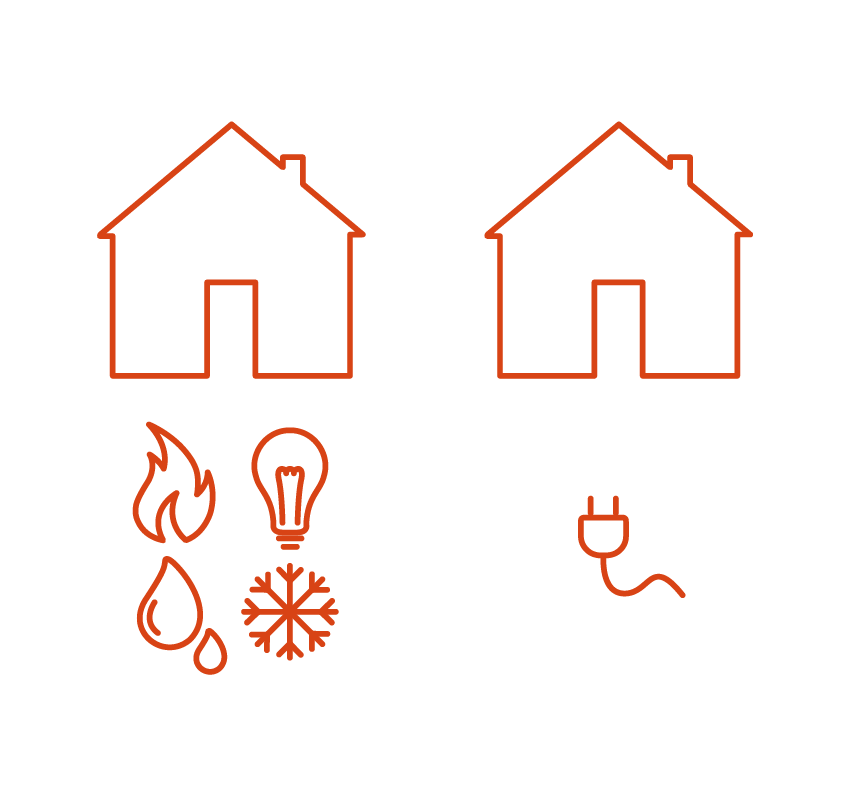Achieve the optimal design approach to minimise energy usage and reduce carbon emissions.
What are carbon emissions?
p151. This is the carbon emitted through the energy used by a building; the heating, cooling, lighting, and water supply all require energy to be used to operate buildings (this is called operational carbon or carbon emissions). The fuel sources to provide these have traditionally been carbon-based energy generated by the burning of fossil fuels which emits carbon. Energy generation that relies on non-fossil fuels sources is known as renewable energy. Renewable energies are so called ‘renewable’ because they rely on natural fuel sources that do not diminish or can be replenished. Renewable energies do not emit the high levels of carbon that fossil fuels do, therefore they help reduce the carbon emitted into the atmosphere. This simply means that every time you turn on the heating or lighting in a building, less carbon is being emitted by process of generating the energy needed to make that happen. This makes the building more sustainable as it has lowered its carbon emissions by using renewable energy.
p152. There are two distinctions around what constitutes the energy consumption and resulting emissions from a building, these are regulated and unregulated energy and emissions.
- Regulated energy:is energy consumed by a building and it's controlled, fixed services and systems, including heating, cooling, hot water, ventilation, fans, pumps and lighting.
- Regulated emissions:are a buildings net CO2 emission, produced by the energy consumption from its controlled fixed services. Such systems are governed by limits set in Building Regulations. The net CO2 regulated emissions of a building fixed services can be reduced by applicable on-site sustainable energy generation; this can help reduce the carbon emissions of regulated energy, as a result reduce a buildings carbon footprint.
p153.
As a building’s fixed services and systems, including heating, cooling, hot water supply, ventilation, fans, pumps and lighting, can be controlled by an architect, these items can be factored in and delivered sustainably with the design of a building.
- Unregulated energy:is the energy consumed by a building resulting from fixtures or appliances, these are not limited by Building Regulations. For example, this can include energy consumption from appliances integral to the building’s operation/habitation e.g., lifts, escalators, refrigeration, external lighting, I.T equipment, general electrical items such as, TVs, kettles, microwaves, ovens, hobs etc.
- Unregulated emissions: are the emissions from these fixtures or appliances within a building. They constitute towards the buildings carbon footprint but cannot be directly controlled directly through design, either by the design of the building or limitation/prescription of what can be used.
p154. As a building’s fixtures or appliances, can all differ from building to building and are chosen by the occupant, an architect does not have control over them, therefore the energy used or required by fixtures and appliances cannot be factored or required to constitute towards the sustainable design of a building.
What to consider in your design approach?
p155. The building’s envelope is the main source and quickest route to de-carbonising a building, through the insulation of the walls, windows, roof and ground floor to the highest standards, to help reduce emissions.
p156. Increasing the thermal efficiency of a building reduces the need for heat input, except for the coldest conditions. The most thermally efficient designs require the elimination of thermal bridging and an airtight building, mechanically ventilated, in order to maintain air quality and avoid cold spots and condensation.
p157. Conversely, it is vital that the building design avoids overheating. The Chartered Institute of Building Services Engineers provides guidance on the avoidance of overheating risks in their Note CIBSE TM59, which should be consulted.
Modern Methods of Construction
p158. Modern methods of construction (MMC), using predominantly off-site fabrication to high standards, can play a significant part in achieving a reduction in emissions, if the choice of materials does not involve high energy input or excessive transport costs.
p159. The adoption of MMC, however, should also have regard to the place, setting and character of a site.
p160. Alternatively, the improved versions of the use of traditional and off-site materials and construction can yield very high levels of insulation, especially if their energy costs are lower. In some cases, the use of cob/mud brick, rendered and properly detailed, or rendered straw bale represent the emergence of a new local vernacular. The benefits of building with biomass, including sustainably sourced timber, as well as the above, can help ‘lock in’ already sequestered carbon.


